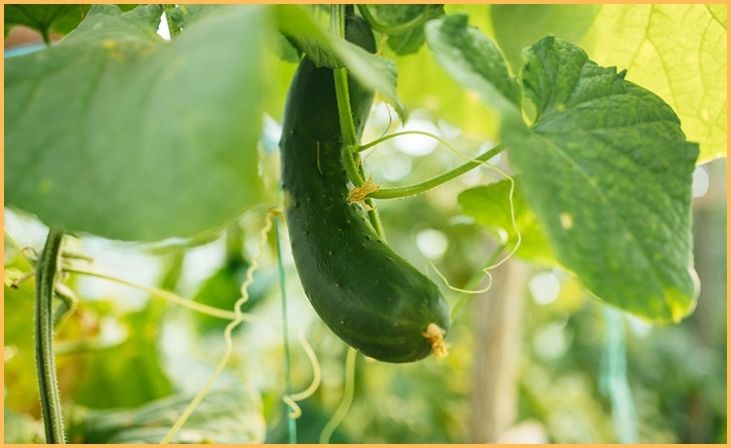Cultivating your own vegetables at home is a journey into a world of satisfying self-sufficiency and delicious sustainability. It’s a practice that not only yields an abundance of fresh, organic produce but also nourishes your connection with nature. In this article, we’re here to be your green-thumb guide, ready to walk you through the art of growing 5 fast-growing vegetables in the comfort of your home.
There’s a unique joy in knowing that the vibrant, crispy veggies adorning your plate are the result of your own labor and care. It’s a feeling that transcends the taste; it’s the profound satisfaction of being a part of the life cycle from seed to plate. But, the rewards of home gardening go even deeper. In a world increasingly conscious of its ecological footprint, growing your vegetables is a deliberate step towards a more sustainable lifestyle.
In this guide, we’ll equip you with the knowledge and insights to make your home garden flourish. Whether you’re a seasoned horticulturalist or a novice with a newfound green ambition, we’ve got you covered. With the right know-how and a sprinkle of dedication, you’re on the brink of transforming your living space into a thriving green haven.
Preparing Your Garden

If you want to start gardening at home, you need to make sure your garden or planting area is ready. Here is a list of what you need to do:-
Choosing the Right Location
First, scout out the perfect spot in your garden, on your patio, or balcony, that receives a minimum of 6-8 hours of sunlight each day. Most vegetables thrive in full sun, so make sure your chosen area meets this requirement to ensure healthy growth.
Soil Preparation
The foundation of a successful vegetable garden lies in your soil. Ensure that your soil drains well and has a lot of organic matter. You can boost your soil’s fertility by adding compost, which not only provides essential nutrients but also improves its water retention capacity. This fertile base will give your vegetables the healthy start they need.
Planting Seeds
Once your soil is ready, follow the instructions on the seed packet meticulously. Pay attention to the recommended planting depth and spacing for each vegetable. Adequate spacing is crucial to ensure your plants have enough room to grow and flourish.
Watering
Maintaining the right level of soil moisture is key to healthy plant growth. Your aim should be to keep the soil consistently moist but not waterlogged. Overwatering can lead to root rot, while underwatering can stress the plants. Finding that perfect balance is critical to a thriving garden.
Mulching
Apply a layer of mulch around your plants. Mulch helps retain soil moisture, prevents weed growth, and regulates soil temperature. It acts as a protective blanket, keeping your garden in optimal condition.
Also Read:- Best Exercises For Seniors
Grow 5 Fast-Growing Vegetables At Home
Tomatoes

Tomatoes are one of the most beloved choices for home gardening. They’re versatile, relatively easy to grow, and they bring vibrant color to your garden and palate. Here’s what you need to know:
Planting Tomatoes
For ease of use, start with young tomato plants instead of seeds. Make a hole, put the plant in it, and make sure the soil covers all of the roots. For the plant to feel at home, give it lots of water.
Support Structures
Tomatoes tend to grow tall and heavy. They require support as they mature. Stakes or tomato cages are excellent options to prevent them from bending or breaking under their weight.
Pruning
Regularly trim the lower leaves of your tomato plants to enhance air circulation and reduce the risk of diseases. This will keep your tomato plants healthy and robust.
Harvesting
Tomatoes are ready for harvest when they are firm, fully colored, and slightly soft to the touch. Be gentle when plucking them to avoid any damage to the plant.
Cucumbers

Cucumbers are another fast-growing delight that thrives in most home gardens. Let’s discover how to cultivate them successfully:
Planting Cucumbers
Plant cucumber seeds in mounds or rows, ensuring adequate spacing between the seeds. After planting, water them thoroughly to encourage their growth.
Supporting Vines
Cucumbers are vining plants, and they require support as they grow. Trellises or cages work wonderfully to provide the necessary structure for their upward climb.
Pest Control
Keep an eye out for common pests that might affect your cucumbers, such as aphids and cucumber beetles. Consider natural remedies or pesticides if necessary to protect your crop.
Harvesting
Cucumbers are at their best when they’re young and tender. Harvest them regularly to encourage a continuous supply of fresh cucumbers.
Zucchini

Zucchini is a fast-growing and prolific vegetable that’s perfect for home gardening. Here’s what you need to know to successfully grow them:
Planting Zucchini
Plant zucchini seeds or seedlings in well-drained soil, ensuring they have enough space to spread out as they grow.
Fertilization
Zucchinis benefit from regular feeding. Use a balanced fertilizer to promote healthy growth and abundant harvests.
Harvesting
Zucchinis are best when picked at around 6-8 inches in length. Overly mature zucchinis can become tough and less flavorful.
Companion Planting
Zucchinis pair exceptionally well with beans, corn, and radishes. Consider planting these vegetables together to maximize your garden’s potential.
Radishes

Radishes are an excellent choice for beginners due to their incredible speed of growth. Here’s how to cultivate them effectively:
Planting Radishes
Sow radish seeds directly into loose, well-draining soil. This setup allows for proper root development and swift growth.
Also Read:- Low Carb Dinner Recipes
Thinning
As your radishes begin to grow, thin them out to provide ample space for their proper development. Crowding can lead to smaller and less flavorful radishes.
Watering
Maintain consistent soil moisture to prevent radishes from becoming excessively spicy, as they tend to do in dry conditions.
Harvesting
Radishes can be harvested as soon as they reach a reasonable size, which typically takes just a few weeks. Enjoy their peppery goodness in your salads and dishes.
Green Beans

Green beans are not only nutritious but also fast-growing. Here’s how to cultivate them at home:
Planting Green Beans
Sow green bean seeds in well-drained soil, and ensure they have some form of support as they grow, as they tend to vine.
Watering
Consistently maintain soil moisture, especially during dry spells, as beans are sensitive to drought.
Harvesting
Green beans are best enjoyed when they’re tender and young. Regular harvesting encourages more production and ensures their quality.
Companion Planting
For a thriving garden, consider planting green beans alongside carrots, corn, or cucumbers, as these combinations often work harmoniously together.
Conclusion
Embarking on the journey of growing your own vegetables at home is an endeavor that promises a profound sense of satisfaction, not to mention its significant contribution to a sustainable lifestyle. It’s a harmonious fusion of self-sufficiency, environmental responsibility, and the pure joy of relishing produce straight from your own garden. In this article, we’re your companions on this voyage, offering valuable tips and guidelines to ensure your success in cultivating 5 fast-growing vegetables in the cozy confines of your home.
Imagine the satisfaction of serving a salad crafted entirely from your own organically nurtured vegetables. It’s a meal that tastes even better because it’s a product of your hard work and dedication. But the rewards of homegrown vegetables extend far beyond taste. By tending to your garden, you’re part of a movement towards sustainable living.
FAQs
A: Tomatoes typically take around 60-85 days from planting to maturity.
A: Yes, you can grow all of these vegetables in containers as long as they have sufficient space and sunlight.

